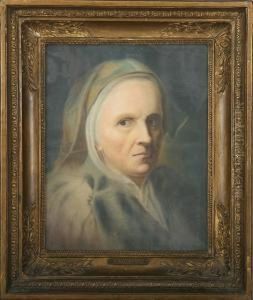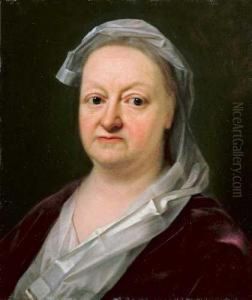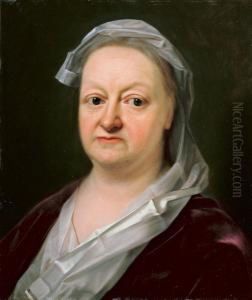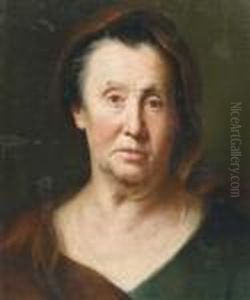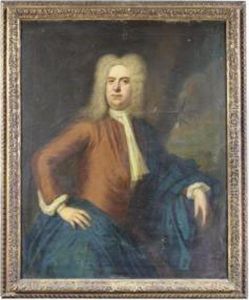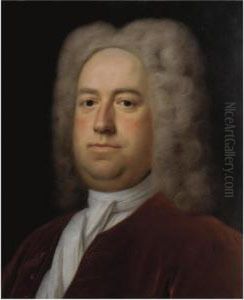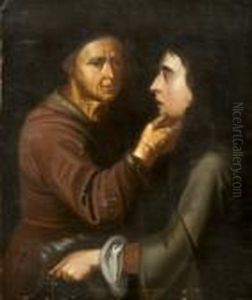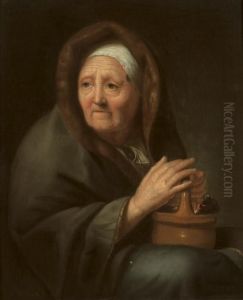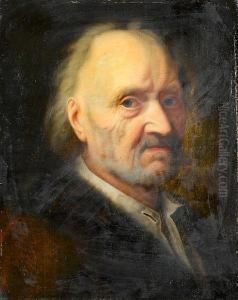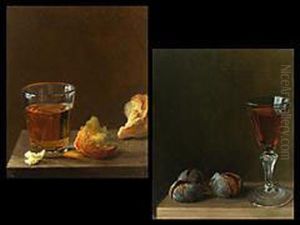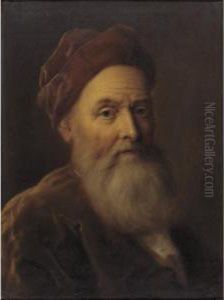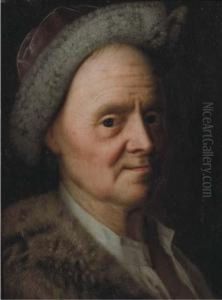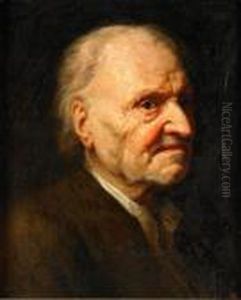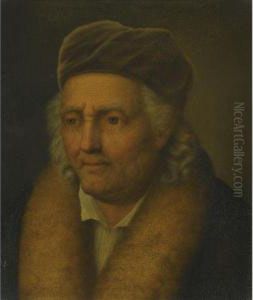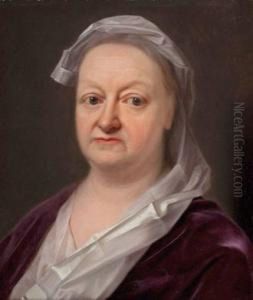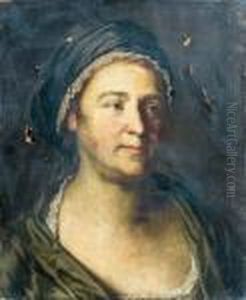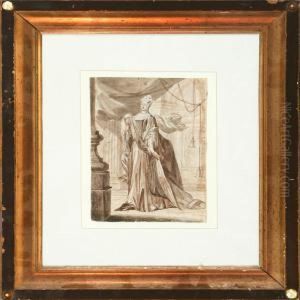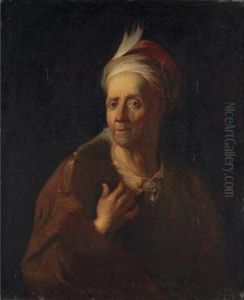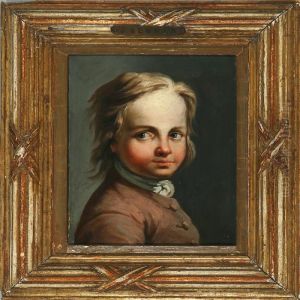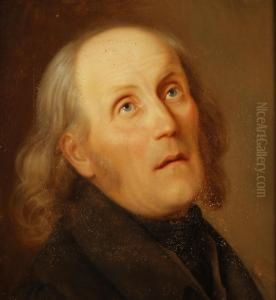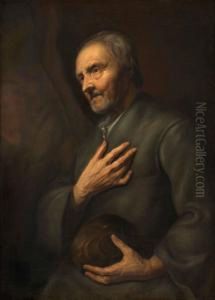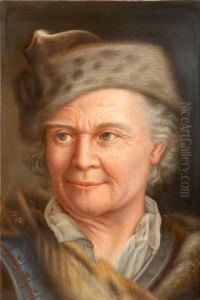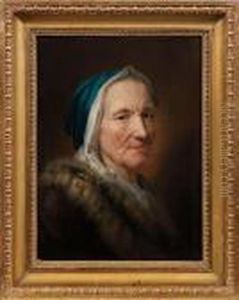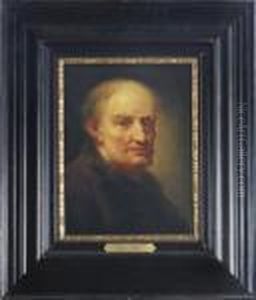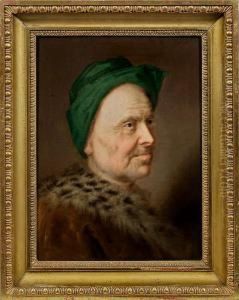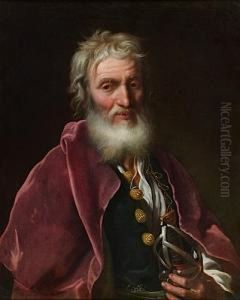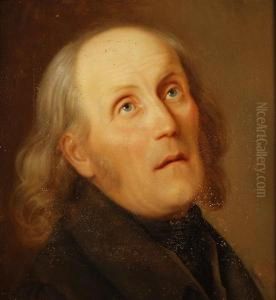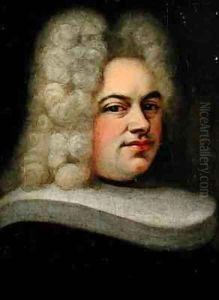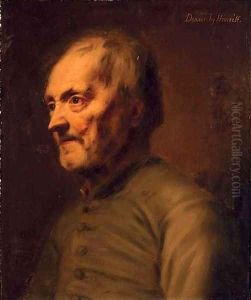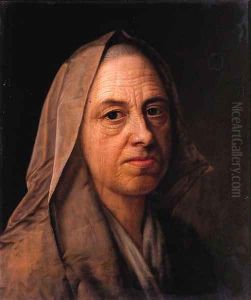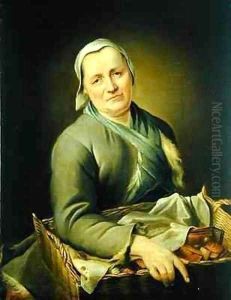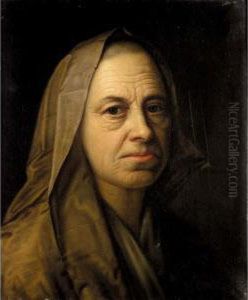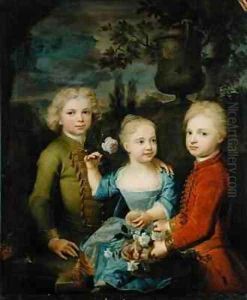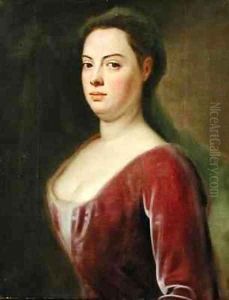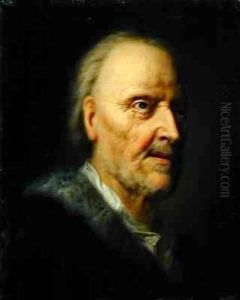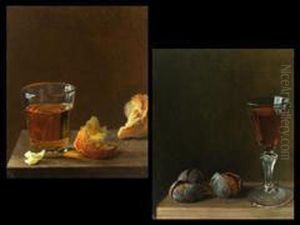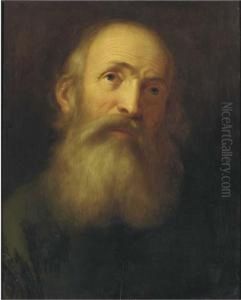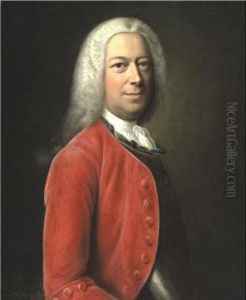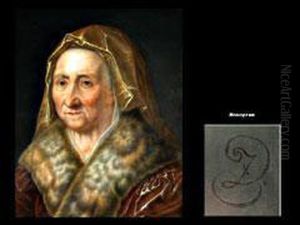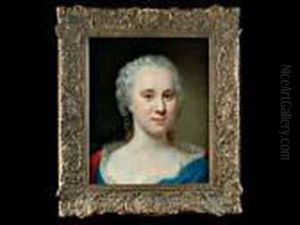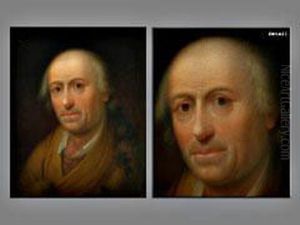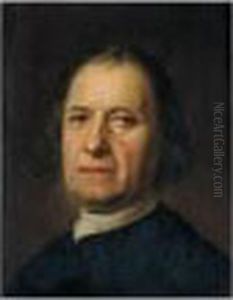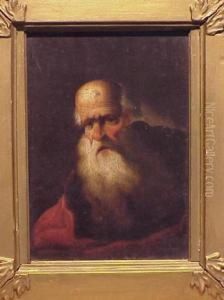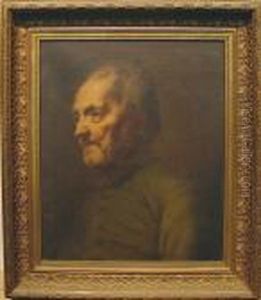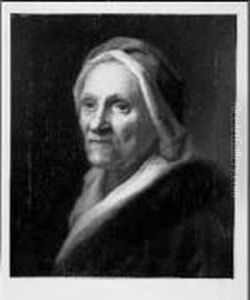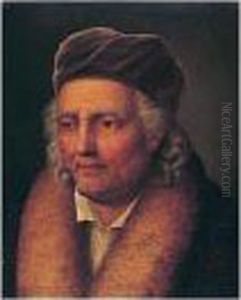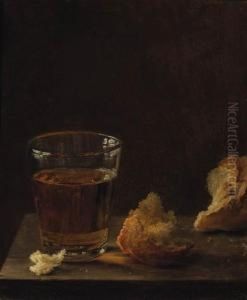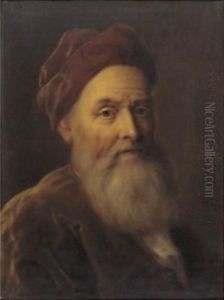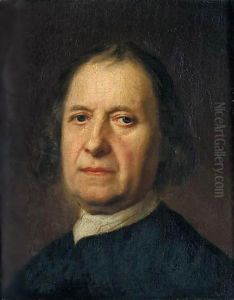Balthasar Denner Paintings
Balthasar Denner was a renowned German painter of the Baroque period, celebrated for his highly detailed and finely executed portraits which often focused on the minutiae of the human face. Born on November 15, 1685, in Hamburg, then a free imperial city of the Holy Roman Empire, Denner began his artistic career under the tutelage of his father, a painter of miniatures, which influenced his later predilection for intricate details.
Denner's early work included religious subjects and small portraits, but he eventually developed a style characterized by its extreme realism and meticulous attention to detail, especially in rendering the textures of skin and hair. His subjects often included elderly men and women, whose wrinkled skin and expressive faces provided rich textures and depth to his work. By the early 18th century, Denner's portraits were in high demand, and he traveled extensively across Europe, including stays in Denmark, the Netherlands, and various German states, to fulfill commissions for wealthy patrons.
In 1720, Denner's reputation grew significantly when he presented a portrait of an elderly woman at the Paris Academy, which was met with widespread acclaim. The painting showcased his technical skill in depicting human aging with both realism and dignity. His work impressed various European courts, and he received commissions from prominent figures of the time, including Tsar Peter the Great of Russia and King Friedrich Wilhelm I of Prussia. Despite such high-profile clientele, Denner remained humble and focused on his craft throughout his life.
Denner's later works continued to reflect his fascination with detail, although some critics argued that his focus on the minutiae sometimes overshadowed the emotional or psychological aspects of his subjects. Nevertheless, his portraits remain highly regarded for their technical mastery and contribute to the understanding of Baroque portraiture.
Balthasar Denner passed away on April 14, 1749, in Rostock. His legacy lives on through his portraits which continue to be admired for their astonishing detail and the window they provide into the Baroque era's approach to realism in art. His influence extended to other painters of his time and beyond, as they emulated his meticulous style and his approach to capturing the human condition.
